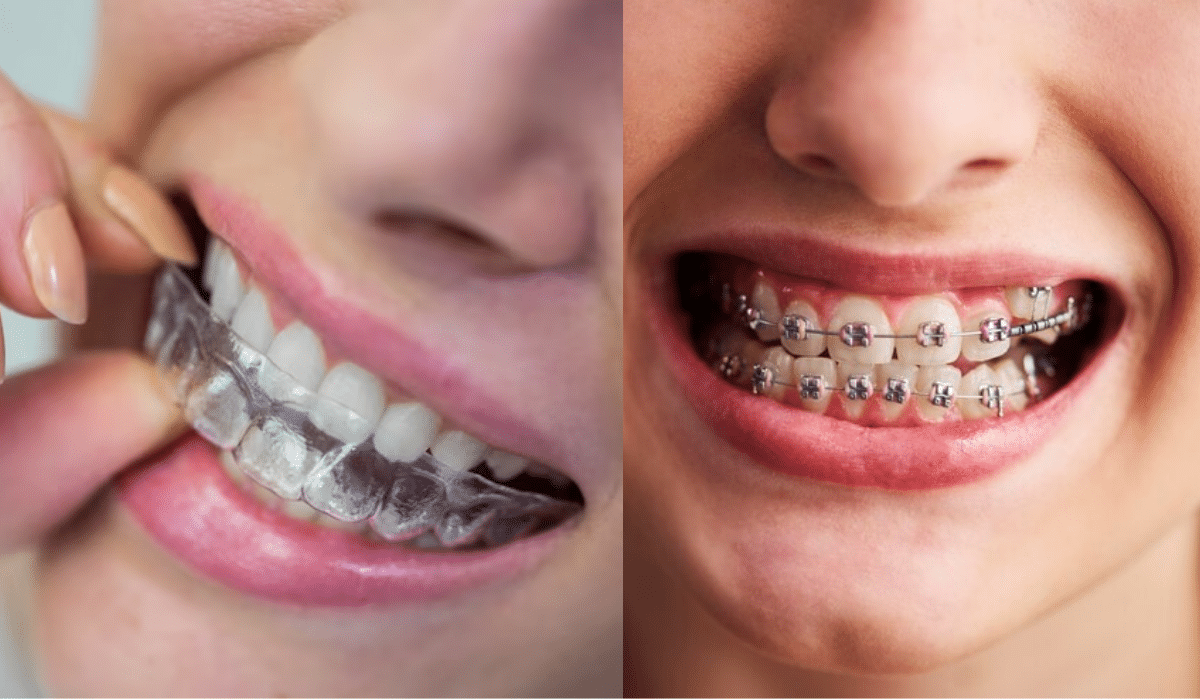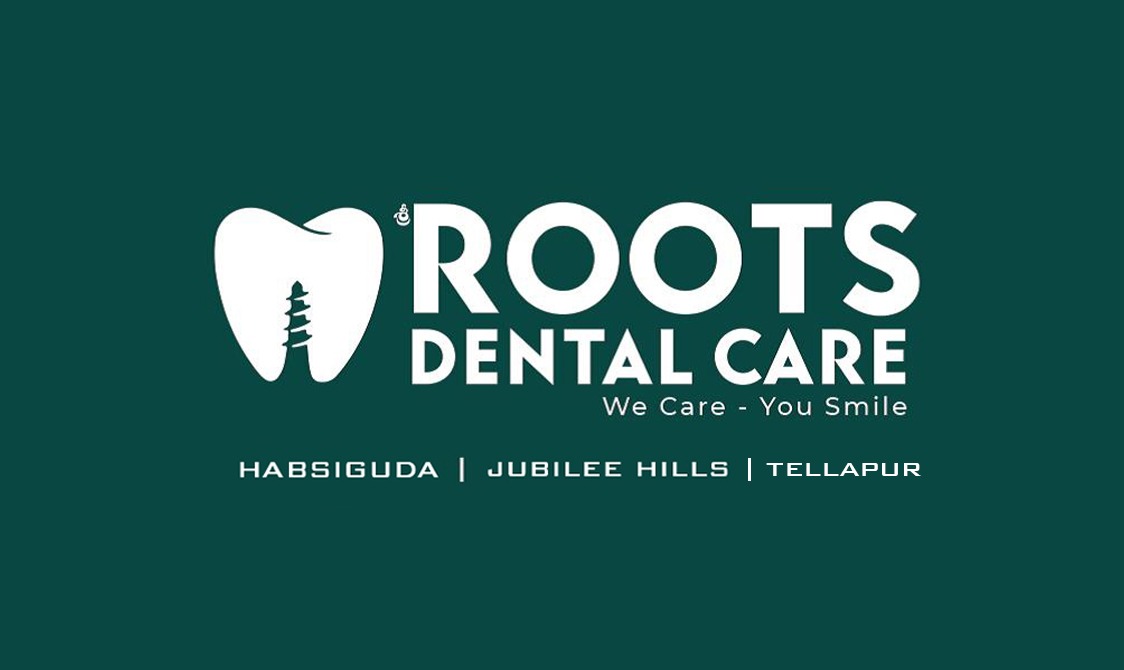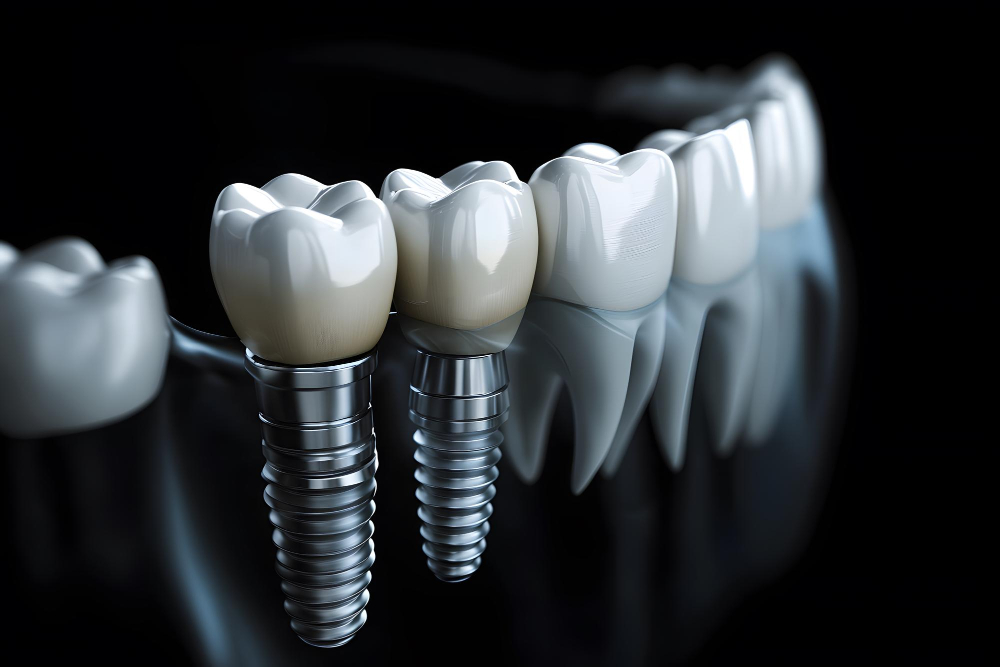
When it comes to straightening your teeth and achieving that perfect smile, two major orthodontic treatments dominate the scene: traditional braces and clear aligners. Both have helped millions of people improve their smiles, but they are distinctly different in terms of their treatment approach, appearance, comfort, and lifestyle impact. Choosing the best option for you can be a daunting task, especially with the multitude of factors to consider. In this comprehensive guide, we’ll explore the differences between braces and clear aligners, discussing the advantages and disadvantages of each to help you make an informed decision.
Understanding Traditional Braces
Traditional braces have been the go-to orthodontic treatment for decades. They consist of metal brackets that are attached to the teeth, with a wire running through them. These brackets are periodically adjusted by an orthodontist to gradually move the teeth into the desired position.
The Components of Braces
- Brackets:Small, metal or ceramic pieces that are affixed to the teeth. These act as the anchor points for the wire.
- Archwire:A thin metal wire that connects the brackets and applies pressure to move the teeth.
- Elastic Bands (O-rings):These are used to hold the archwire in place and may be color-coordinated for fun or aesthetic purposes.
- Molar Bands:In some cases, bands are placed on the back molars to provide additional support.
Benefits of Traditional Braces
- Effectiveness for Complex Cases
Braces are highly effective in treating a wide range of orthodontic issues. From overcrowded teeth and significant misalignment to bite problems like overbites, underbites, and crossbites, braces can handle more complex cases than clear aligners. - Precision in Tooth Movement
Braces provide precise control over the movement of the teeth. They allow orthodontists to address specific areas of the mouth and make detailed adjustments for optimal results. - No Risk of Misplacement
Since braces are fixed to your teeth, you don’t need to worry about misplacing or forgetting to wear them. They stay in place 24/7, ensuring that your treatment progresses as planned. - Suitable for All Ages
While clear aligners are often more popular among adults, braces can be worn by patients of all ages. They are an excellent choice for children and teenagers who are still in their growing phase, as they can help guide proper jaw development.
Drawbacks of Traditional Braces
- Aesthetic Concerns
One of the most common concerns about traditional braces is their appearance. The metal brackets and wires are visible, which can make some people self-conscious, particularly teenagers and adults in professional environments. - Discomfort and Irritation
Braces can cause discomfort, especially after adjustments when the archwire is tightened. The brackets may also irritate the inside of the mouth, causing sores or ulcers. - Oral Hygiene Challenges
Brushing and flossing with braces can be more difficult due to the wires and brackets obstructing access to the teeth. Food can easily get stuck in the braces, leading to a higher risk of plaque buildup, cavities, and gum disease if proper oral hygiene is not maintained. - Dietary Restrictions
Certain foods, especially hard, sticky, or chewy ones, must be avoided during braces treatment. These can damage the braces or get stuck in the wires, causing discomfort or delays in treatment. - Treatment Duration
Braces treatment typically takes longer than clear aligners. Depending on the severity of the case, it can take anywhere from 18 months to 3 years to complete treatment.
The Rise of Clear Aligners
Clear aligners are a modern alternative to traditional braces. They are custom-made, removable plastic trays that fit snugly over the teeth. Aligners are designed to gradually shift the teeth into the desired position over time. One of the most popular brands of clear aligners is Invisalign, but several other companies offer similar products.
The Components of Clear Aligners
- Aligner Trays:Custom-made plastic trays that fit over your teeth. Each tray is slightly different to gradually shift the teeth.
- Attachments:Small buttons or ridges are sometimes added to your teeth to help the aligners grip better and move teeth more effectively.
- Refinement Stages:As treatment progresses, new aligner trays are provided to accommodate the ongoing shift in your teeth.
Benefits of Clear Aligners
- Aesthetics and Discretion
Clear aligners are virtually invisible, making them an ideal choice for individuals who are concerned about the appearance of traditional braces. They are especially popular among adults who prefer a more discreet treatment option. - Removability
One of the biggest advantages of clear aligners is that they are removable. You can take them out to eat, drink, brush, and floss, which makes maintaining good oral hygiene much easier than with braces. - Comfort
Clear aligners are made of smooth plastic, which means they are less likely to irritate the inside of your mouth. They are generally more comfortable than braces, particularly when it comes to adjusting to new aligner trays. - Fewer Dietary Restrictions
Since clear aligners can be removed before eating, you don’t need to worry about avoiding certain foods. You can continue to enjoy your favorite meals without worrying about damaging your aligners. - Predictable Results with Technology
Clear aligners use advanced 3D imaging technology to map out a treatment plan. This allows patients to see a digital simulation of how their teeth will look throughout the treatment process, making it easier to understand the progression of their orthodontic journey. - Shorter Treatment Time for Mild to Moderate Cases
Clear aligners typically require a shorter treatment time than traditional braces, especially for individuals with mild to moderate dental issues. Treatment can take as little as 6 to 18 months, depending on the complexity of the case.
Drawbacks of Clear Aligners
- Not Suitable for Complex Cases
Clear aligners may not be the best option for individuals with more complex orthodontic issues. Severe misalignments, large gaps, or bite problems might require the precision of traditional braces for effective treatment. - Discipline is Required
Clear aligners must be worn for at least 20 to 22 hours a day to be effective. Since they are removable, there is a risk of not wearing them enough, which can delay treatment and reduce the effectiveness of the aligners. - Potential for Losing or Damaging Aligners
Since clear aligners are removable, there is a risk of losing or damaging them if they are not handled carefully. You must always keep them in their case when not in use to avoid unnecessary expenses for replacements. - Cost Considerations
Clear aligners can sometimes be more expensive than traditional braces, depending on the provider and the complexity of your case. Insurance coverage can vary, so it’s important to check with your provider. - Requires Frequent Visits to the Orthodontist
While the aligners themselves are easy to manage at home, you’ll still need to visit your orthodontist regularly for check-ups and to receive new aligner trays. These appointments are often less frequent than the adjustments required with traditional braces, but they are still necessary to ensure progress.
Braces vs. Clear Aligners: A Side-by-Side Comparison
Factor | Braces | Clear Aligners |
Appearance | Visible metal brackets and wires | Transparent, nearly invisible plastic trays |
Comfort | Can cause irritation and discomfort | Smooth plastic, less irritation |
Aesthetic Impact | May affect self-esteem in social settings | Minimal aesthetic impact |
Oral Hygiene | More difficult to clean, risk of plaque buildup | Easy to remove for brushing and flossing |
Dietary Restrictions | Avoid sticky, hard, and chewy foods | No restrictions, aligners are removed for eating |
Effectiveness | Highly effective for complex cases | Best for mild to moderate cases |
Treatment Time | Longer (18 months to 3 years) | Shorter (6 months to 2 years) |
Cost | Generally lower, but varies | Can be more expensive |
Suitability for Children | Suitable for all ages | Ideal for teenagers and adults |
Which Treatment Is Best for You?
Ultimately, the choice between braces and clear aligners depends on your specific needs, preferences, and lifestyle. Here are a few scenarios to help guide your decision:
- If you have a complex orthodontic issuesuch as severe misalignment, bite problems, or significant overcrowding, traditional braces may be the best option for you. They are highly effective and can handle more intricate cases.
- If you prefer a discreet treatmentand have mild to moderate dental concerns, clear aligners offer a more aesthetic and comfortable option. They are also ideal for individuals who have a busy lifestyle and don’t want to deal with the visibility or maintenance of braces.
- If you’re an adult or teenagerlooking for a flexible treatment with minimal disruption to your social or professional life, clear aligners provide a sleek, removable alternative to traditional braces.
- If you need to ensure complete precisionin tooth movement and have a tight budget, traditional braces might be the more cost-effective option, offering excellent results over a longer treatment period.
Final Thoughts
Choosing between braces and clear aligners is a personal decision that should be made based on your orthodontic needs, lifestyle.
FAQs:
- What is the difference between braces and clear aligners?
Braces consist of metal or ceramic brackets and wires attached to the teeth, while clear aligners are removable, transparent trays that gradually shift teeth. Braces are often used for more complex cases, while clear aligners are ideal for mild to moderate misalignments. - Which is better for adults: braces or clear aligners?
Clear aligners are generally more popular among adults because they are discreet, removable, and comfortable. However, if an adult has a more complex orthodontic issue, braces may be necessary for optimal results. - How long does treatment take with braces vs clear aligners?
Braces treatment typically lasts between 18 months and 3 years, depending on the complexity of the case. Clear aligners generally take 6 months to 2 years, especially for mild to moderate cases. - Can I eat normally with clear aligners?
Yes, clear aligners are removable, so you can take them out to eat and drink. This eliminates dietary restrictions commonly associated with braces, such as avoiding sticky or hard foods. - Are clear aligners more expensive than braces?
Clear aligners can be more expensive than traditional braces, depending on your specific case and the provider. However, costs may vary, and it’s best to check with your orthodontist for an accurate estimate. - Are braces suitable for children?
Yes, traditional braces are suitable for children and teenagers, especially those in their growing phase, as they help guide proper jaw development.


